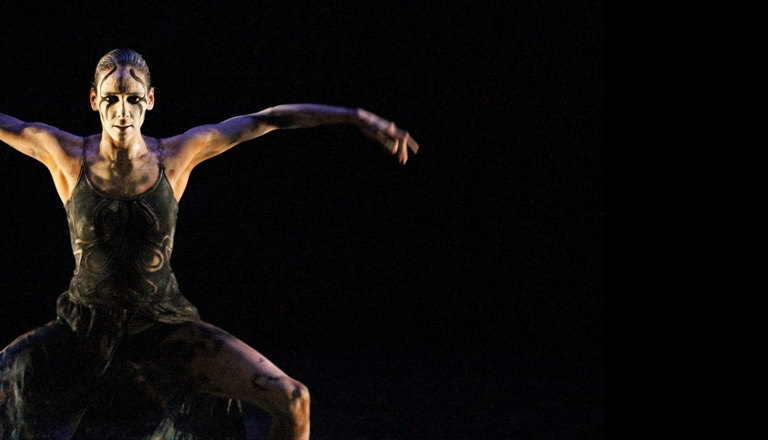Moth (2003)
After Viewing
Note to teachers: Be aware that Indigenous students in your classrooms may share these understandings. Be open to discussing these ideas. Connect with your local Indigenous community to discuss and share their ideas about cultural life.
FOR YEARS 3/4
Pose questions which remind them of their experience
- How many dancers are there?
- Are they male or female?
- What are they wearing and what is in the background?
- Which different stages in the moth’s life cycle did you see?
- Which moments remind us of the pupae stage?
- Which movements help them look like they are winged moths?
Identify some of the main ideas and clarify information from the children’s responses
- Why do you think there are there two moths?
- Why don’t the dancers fly off the floor?
The dance Moth reflects the last stage of a lifecycle and the birth of a new creature. He also says that it is a story of spiritual inheritance and spiritual existence.
- What else could the second dancer represent?
Collect, compare and categorise facts and opinions
- The dancers are leaning forward and stretching out at the beginning of the dance. What do you think they are doing?
- How do their movements change towards the end of the dance?
- Why don’t the dancers flap their arms at the end of the dance?
- Why do the two dancers stay close together?
- There is a lot of dust on the stage. What do you think it is? What do you think it represents? What do you think it is made of?
FOR YEARS 5/6
Pose questions which remind them of their experience
- What sort of shapes did you see?
- Did the dancers perform in close proximity?
- What sort of formations did they make?
Identify some of the main ideas and select and clarify information from the children’s responses
The dance Moth reflects the last stage of a lifecycle and the birth of a new creature. it also says that it is a story of spiritual inheritance and spiritual existence.
- Why do you think there are there two dancers?
- What do they represent?
Collect, compare and categorise facts and opinions
- The dancers are leaning forward and stretching out at the beginning of the dance. What do you think these gestures represent?
- How do their movements change towards the end of the dance?
- This dance is performed on a stage. Where does the light, for us to see the dancers, come from?
- There is a lot of dust on the stage and what do you think it is? What do you think it represents? What do you think it is made of?
Based on the Australian Curriculum, Assessment and Reporting Authority (ACARA) Level 3 statements from the Critical and creative thinking continuum for generating ideas, possibilities and actions, Reflecting on thinking and processes and Analysing, synthesising and evaluating reasoning and procedures areas. Licensed under a Creartive Commons Attribution-NonCommercial-ShareAlike 3.0 Australia (CC BY NC SA) licence. Accessed June 2013.

